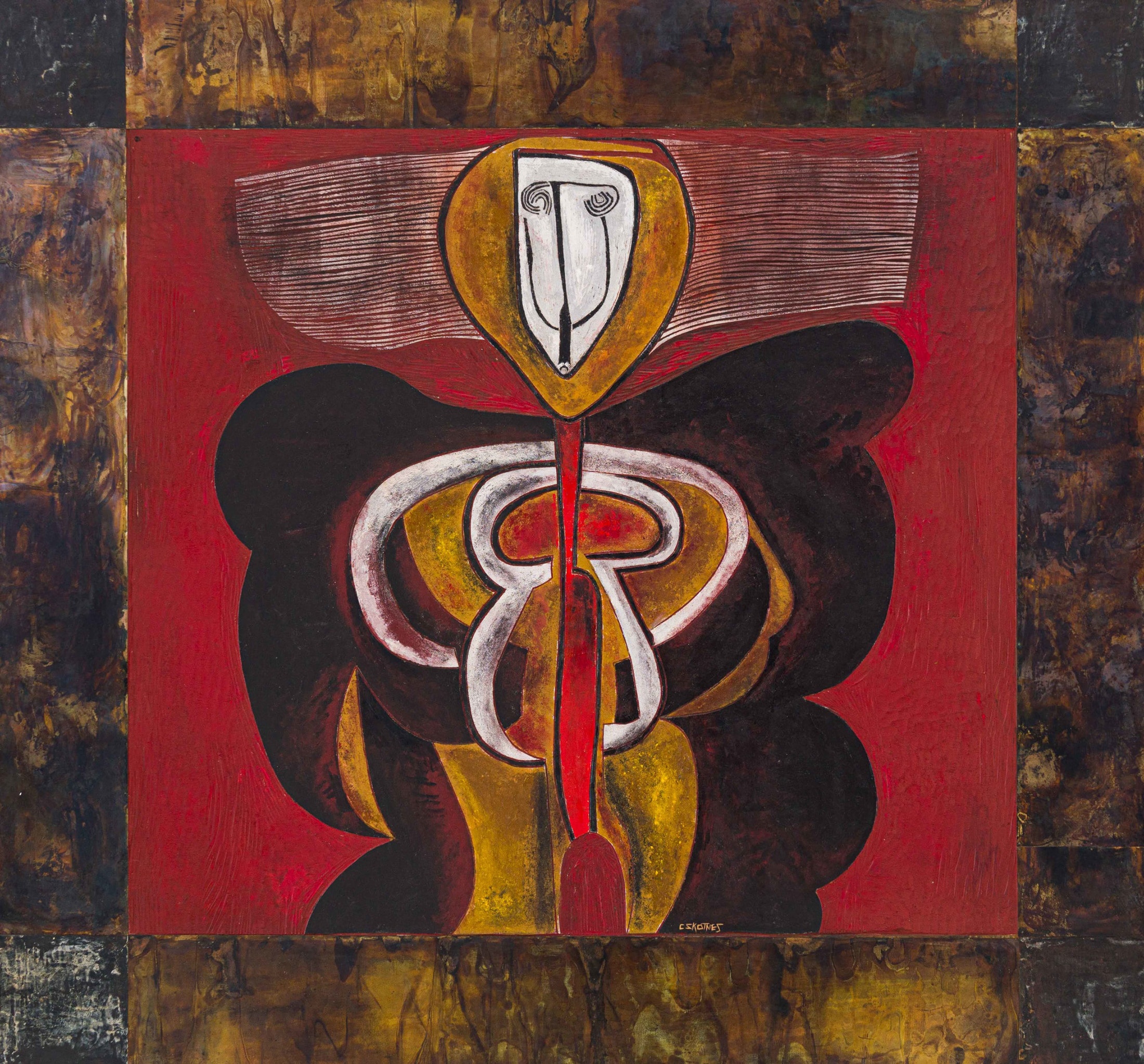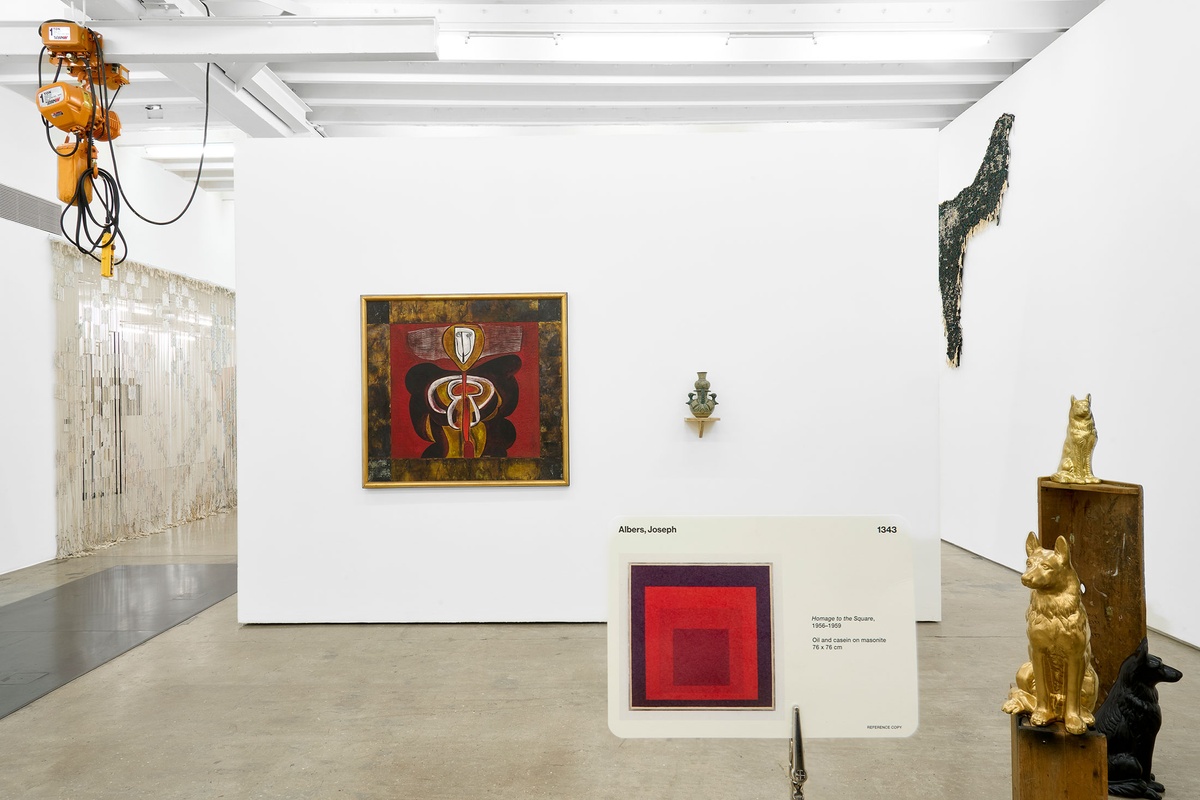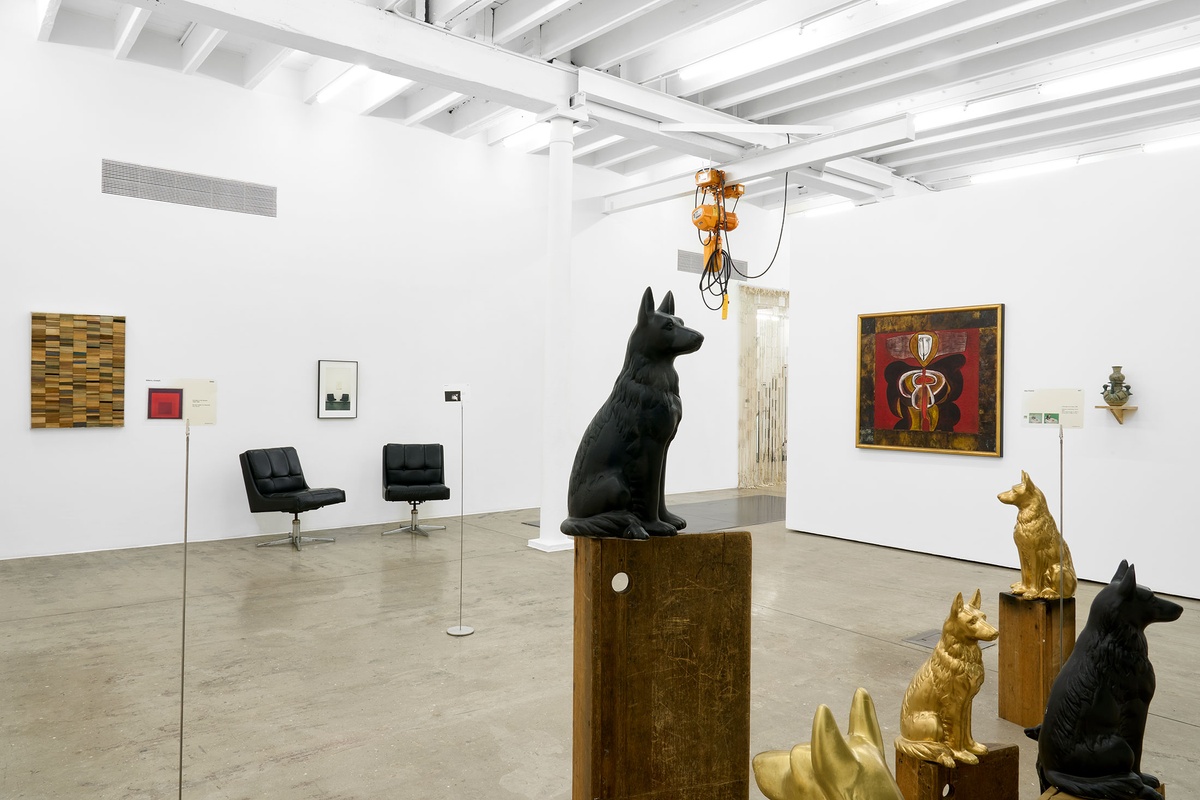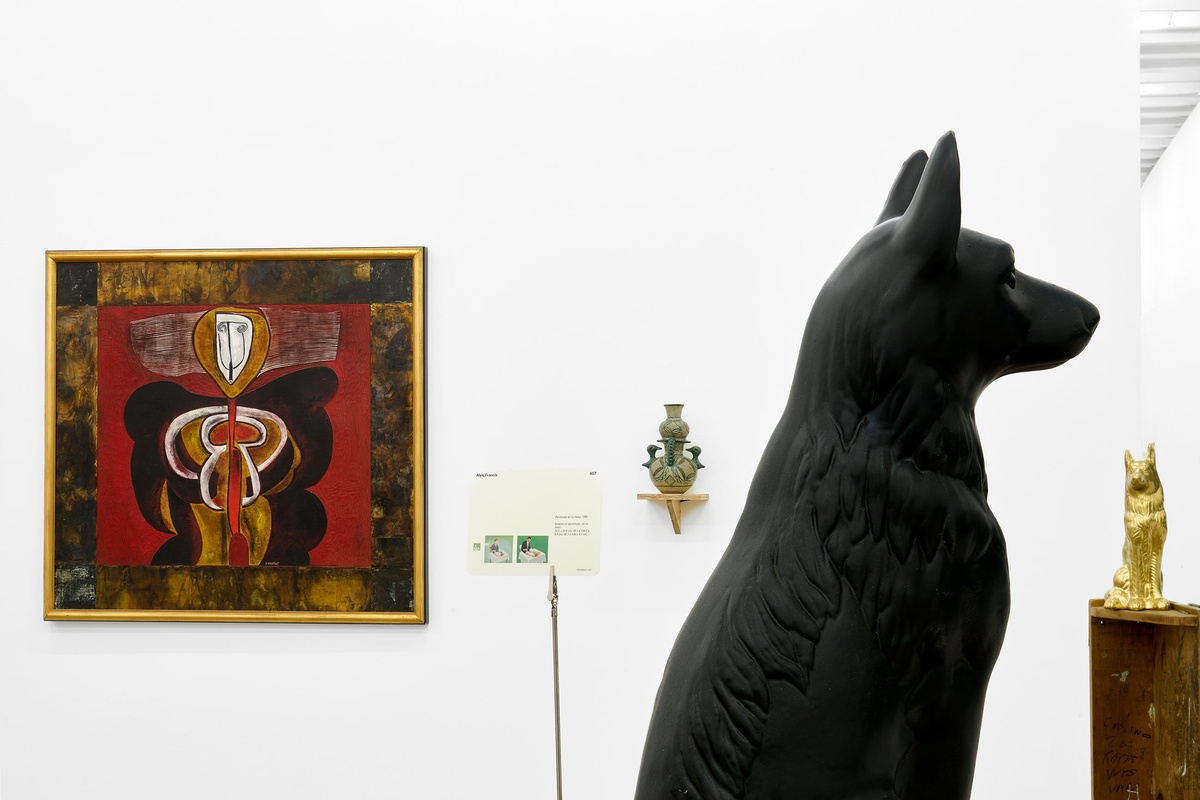Cecil Skotnes

Referencing techniques from printmaking, Ancestral Father is constructed from riveted bronze and incised wood. Instead of focusing on what is printed, Skotnes turned his attention to the carved negative and positive spaces on the block itself. Its surface is painted with earthen tones: deep reds, bruised umbers, bright ochres, and dry-brushed bone white, evocative of the sun-scorched landscapes of South Africa. His interest in capturing the sense of a place through space, light and symbology informed Skotnes’ distinctive neo-Primitivist style.
Initially trained as a painter, he was gifted a set of wood-carving tools in 1954 and began a lifelong material exploration, carving and printed landscapes of his childhood in Johannesburg – of rough velds abstracted by memory – including places in which he had been stationed during WWII, with Egypt interpreted among these. As his interest in African symbology grew, he was drawn to depicting stylised figures, producing graphic portfolios that told the neglected stories of South African historical figures. In its uprightness, Ancestral Father reads as a paternal archetype that echoes Skotnes’ own role as a key cultural mentor in South African art. As his daughter Pippa Skotnes notes: “His lifelong mission has been to nurture talent and encourage creativity, particularly in places where the apartheid government had deliberately excluded this possibility.”
b.1926, East London; d.2009, Cape Town
Cecil Skotes purportedly received his first ‘serious art lessons’ from a painter when stationed in Italy in the midst of WWII. Emboldened, Skotnes decided to pursue Fine Art at Wits University upon his return to South Africa in 1946. There, he learned more about the expansive vocabulary of African art and German Expressionism – visual radiations that would underscore his artistic career. Under Cecil Skotnes’ decade-long direction beginning in 1952, Polly Street, a once underutilised recreation facility, was transformed into a renowned art centre that trained a generation of black artists, amongst them Sydney Kumalo and Ephraim Ngatane. A central figure in South African art, Skotnes’ legacy endures as one of cultural mentorship and advocacy for a local visual lexicon during a precarious and repressive time in South African history. He was a founding member of the Amadlozi Group in the 1960s, an artist collective that wished to express ‘a spirit of Africa’. In this context, he began exploring woodcutting and engraving in his artistic practice, and developed a distinctive style informed by African iconography, European abstraction and the material limits of wood-carving.


